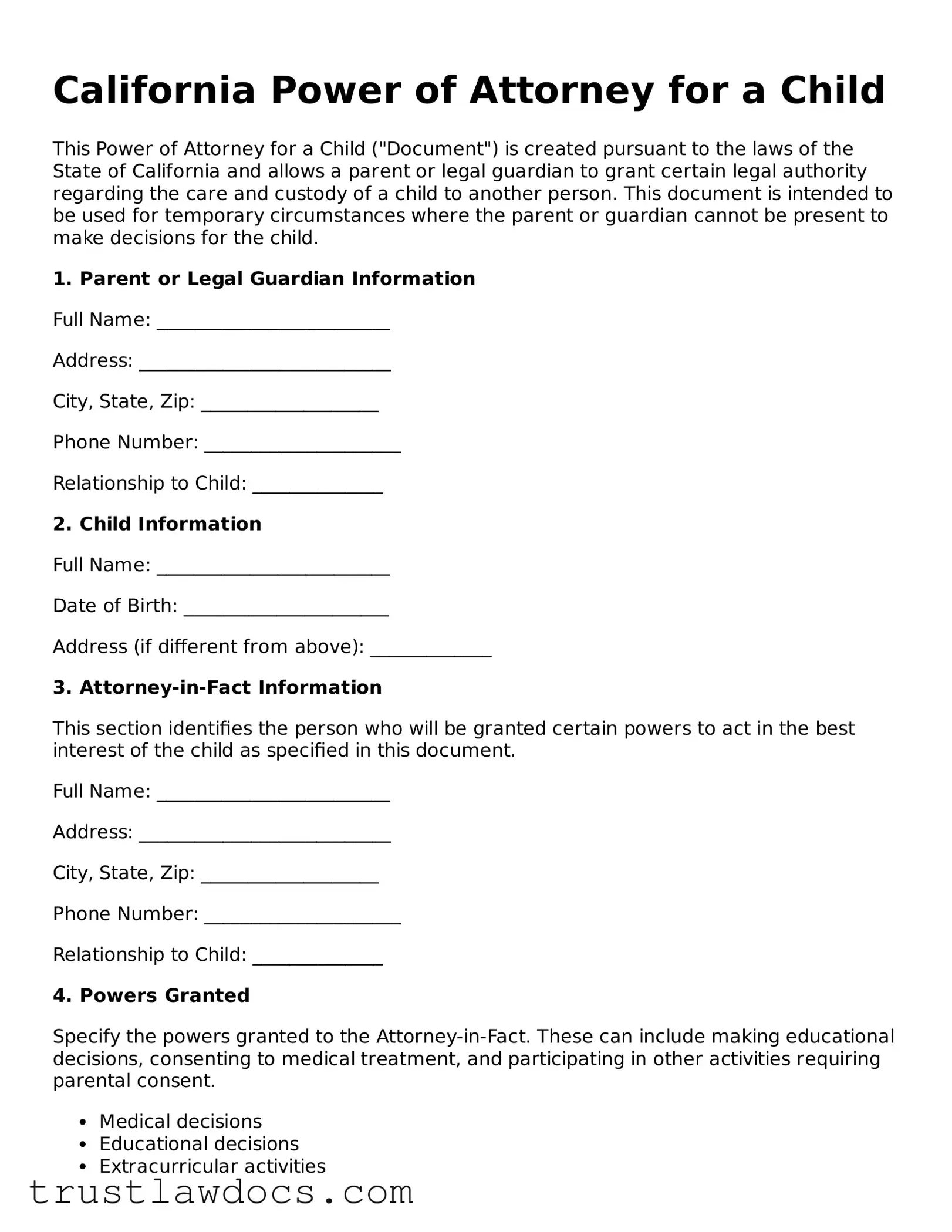California Power of Attorney for a Child
This Power of Attorney for a Child ("Document") is created pursuant to the laws of the State of California and allows a parent or legal guardian to grant certain legal authority regarding the care and custody of a child to another person. This document is intended to be used for temporary circumstances where the parent or guardian cannot be present to make decisions for the child.
1. Parent or Legal Guardian Information
Full Name: _________________________
Address: ___________________________
City, State, Zip: ___________________
Phone Number: _____________________
Relationship to Child: ______________
2. Child Information
Full Name: _________________________
Date of Birth: ______________________
Address (if different from above): _____________
3. Attorney-in-Fact Information
This section identifies the person who will be granted certain powers to act in the best interest of the child as specified in this document.
Full Name: _________________________
Address: ___________________________
City, State, Zip: ___________________
Phone Number: _____________________
Relationship to Child: ______________
4. Powers Granted
Specify the powers granted to the Attorney-in-Fact. These can include making educational decisions, consenting to medical treatment, and participating in other activities requiring parental consent.
- Medical decisions
- Educational decisions
- Extracurricular activities
- Travel consent
- Other: __________________________
5. Term
The duration of this Power of Attorney shall be from ______________ to ______________, unless terminated earlier by the written consent of the Parent or Legal Guardian.
6. Signature
This document is not valid unless it is signed by the Parent or Legal Guardian, notarized, and, if necessary, approved by a court in accordance with California law. A copy of this document should be provided to the Attorney-in-Fact.
Parent or Legal Guardian Signature: ______________________ Date: ____________
Attorney-in-Fact Signature: _____________________________ Date: ____________
Notary Public: ________________________________________ Date: ____________
This document is intended to provide general information and is not a substitute for legal advice. Individuals may wish to consult a lawyer to ensure that this document meets their specific needs and complies with current California laws.
